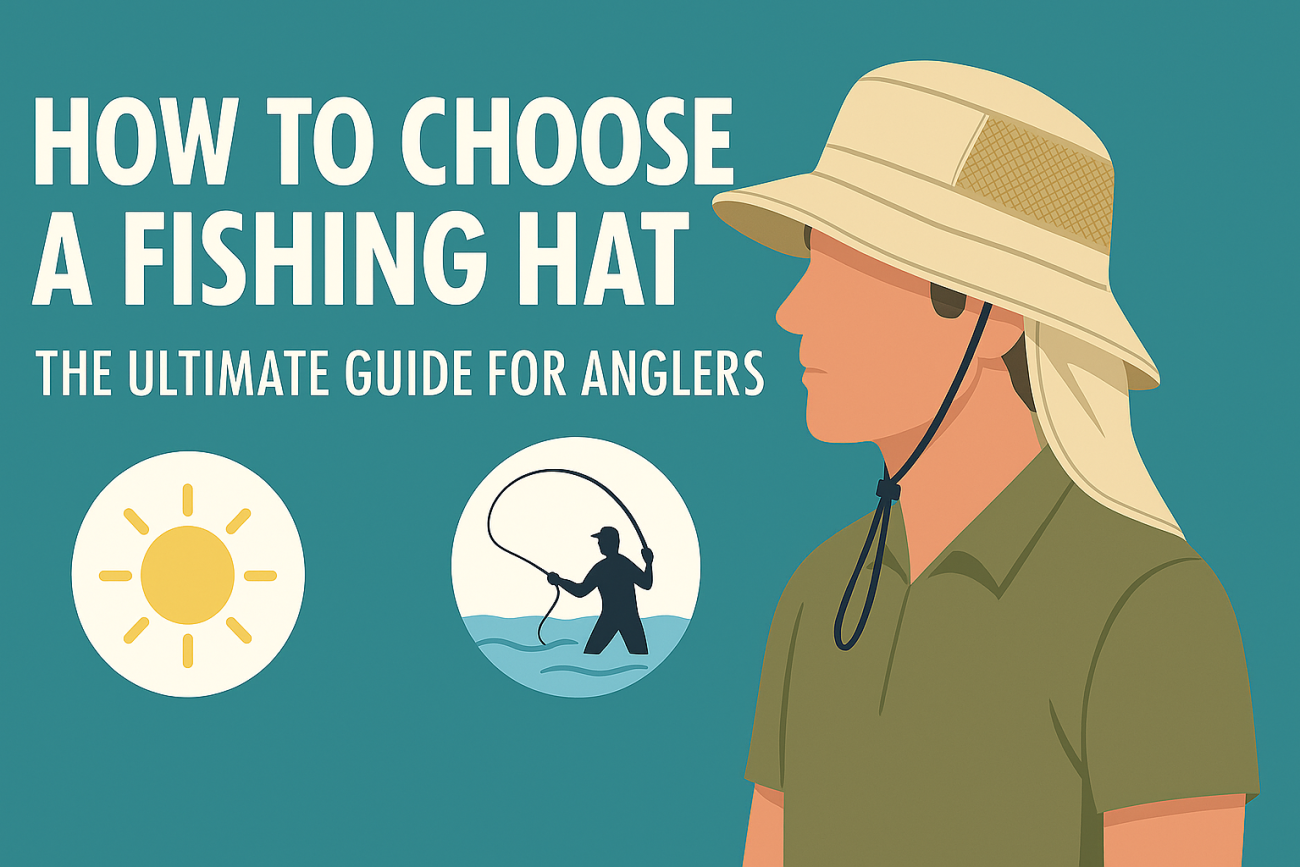Whether you are a seasoned angler or just starting out, the importance of a good fishing hat cannot be overstated. The right fishing hat not only enhances comfort during long hours on the water but also provides crucial protection from sun, wind, and rain. With countless options on the market, understanding how to choose a fishing hat that fits your specific needs can make all the difference in your outdoor experience.
Why a Good Fishing Hat Matters
A fishing hat is more than just a style statement—it’s essential gear for outdoor enthusiasts. It shields your face, ears, and neck from harmful UV rays, reduces glare on the water, and helps regulate your body temperature. Additionally, a well-chosen hat can keep pesky insects at bay and wick away sweat, keeping you cool and focused on the catch.
Factors to Consider When Choosing a Fishing Hat
Selecting the best fishing hat involves evaluating several factors. Here’s an in-depth look at what you should keep in mind:
1. Material
The material of your fishing hat determines its suitability for different weather conditions and its overall durability. Common materials include:
- Cotton: Soft and breathable, but may become heavy when wet and may not dry quickly.
- Nylon/Polyester: Lightweight, quick-drying, and excellent for wet environments. Many modern hats use synthetic blends for superior moisture-wicking.
- Mesh Panels: Often incorporated for added ventilation, especially useful in hot climates.
2. Sun Protection (UPF Rating)
Prolonged sun exposure can lead to sunburn and long-term health risks. Look for hats labeled with a UPF (Ultraviolet Protection Factor) rating. A UPF of 50+ is ideal, as it blocks 98% of UV rays. Wider brims further enhance sun protection by shading the face, ears, and neck.
3. Hat Styles
Fishing hats come in several styles, each offering unique advantages:
- Boonie Hat: Wide-brimmed and highly protective, ideal for all-day sun coverage.
- Baseball Cap: Popular for casual fishing, offers good visibility but limited side and neck protection.
- Bucket Hat: Short, downward sloping brim, comfortable and stylish, but less coverage than boonies.
- Legionnaire Hat: Features a flap that covers the neck, excellent for intense sun conditions.
- Visor: Provides top ventilation but no crown protection—a good choice for shade only.
4. Comfort and Fit
A fishing hat should fit snugly but not too tight. Consider hats with adjustable straps, drawstrings, or elastic bands for a custom fit. Light padding and sweatbands enhance comfort, especially during extended wear.
5. Ventilation and Breathability
On hot days, a hat that traps heat can be uncomfortable. Opt for hats with mesh panels, eyelets, or moisture-wicking liners to promote airflow and keep your head cool.
6. Water Resistance and Quick-Drying Properties
Fishing often involves exposure to water, whether from rain, splashes, or sweat. Choose hats made of water-resistant materials or those that dry quickly to maintain comfort and prevent mildew.
7. Insect Protection
In buggy environments, some hats feature built-in or removable mosquito netting. This is especially helpful in marshy or tropical fishing spots.
8. Packability and Storage
For anglers on the go, hats that can be folded or rolled without losing shape are invaluable. Check for crushable brims and packable designs that fit easily into backpacks or tackle boxes.
Additional Features to Look For
- Chin Straps: Secure your hat in windy conditions.
- Dark Underbrims: Reduce glare from the water’s surface.
- Ponytail Holes: Convenient for anglers with longer hair.
- Reflective Elements: Enhance visibility in low-light conditions.
- Pockets or Loops: Handy for storing small fishing essentials.
How to Choose the Best Fishing Hat for Your Needs
When deciding on the ideal fishing hat, consider the specific conditions you’ll be facing. Here are some quick tips based on various scenarios:
For Sun-Intensive Fishing Trips:
- Pick a wide-brimmed hat or a Legionnaire hat with UPF 50+ fabric.
- Prefer light-colored hats that reflect sunlight.
- Ensure full coverage for the neck, face, and ears.
For Wet or Rainy Environments:
- Choose water-resistant or waterproof materials (nylon/polyester blends).
- Opt for hats with sturdy brims and secure chin straps.
- Look for hats with quick-drying capabilities.
For Buggy or Forested Areas:
- Select hats with integrated or optional insect netting.
- Consider tight weaves or treated fabrics to deter bugs.
For Travel and Portability:
- Opt for collapsible or packable designs.
- Lightweight materials make for easier transport.
Care and Maintenance Tips
Proper care ensures your fishing hat lasts for many seasons. Here’s how to maintain your hat:
- Always follow manufacturer care instructions.
- After exposure to saltwater or sweat, rinse the hat with fresh water.
- Allow to air dry completely before storing.
- Spot clean stains and avoid harsh detergents.
- Store in a dry, cool place to prevent mold and odor buildup.
Top Recommendations: Popular Fishing Hat Brands
- Columbia: Known for high UPF ratings and innovative cooling fabrics.
- Simms: Premium quality designed for serious anglers.
- Outdoor Research: Durable, functional, and stylish options.
- Sunday Afternoons: Renowned for broad brims and sun protection.
- Patagonia: Sustainable, comfortable, and versatile hats.
Conclusion
Choosing the right fishing hat is a critical step toward a safe, comfortable, and enjoyable fishing adventure. By considering your unique needs—such as climate, sun exposure, comfort, and special features—you can find a hat that not only elevates your fishing game but also protects your health for many seasons to come. Invest in quality, fit, and function, and your fishing hat will quickly become one of your most trusted pieces of gear.
